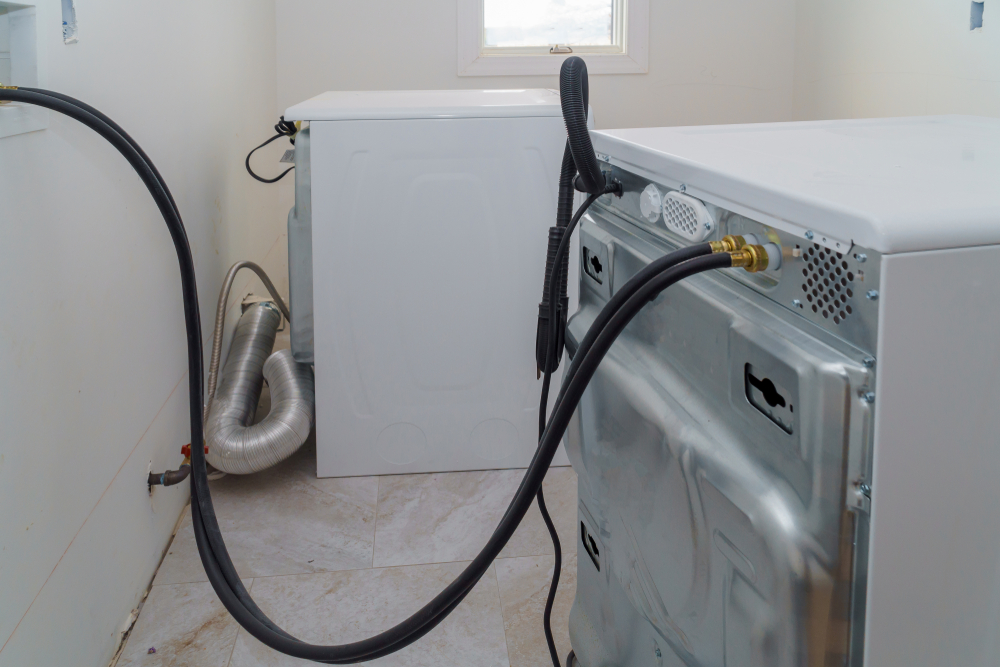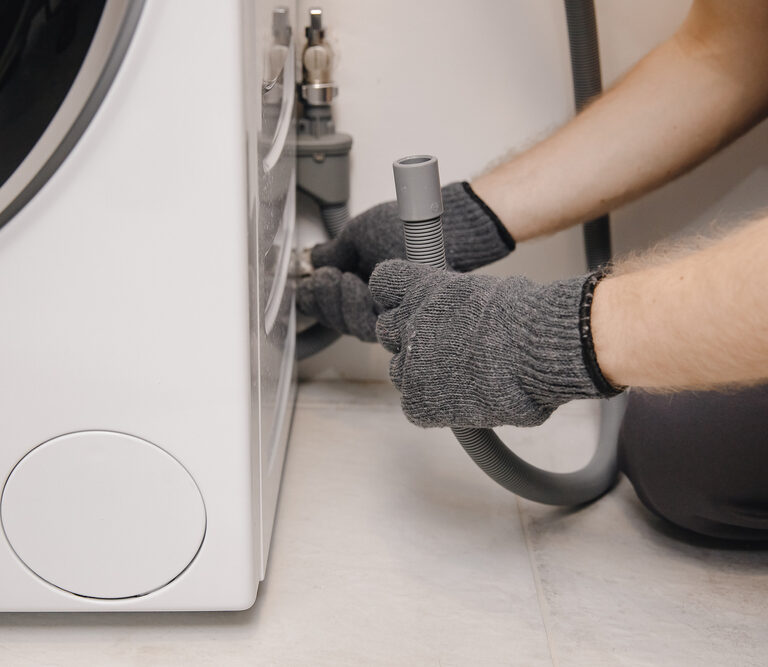Are you having issues with your washing machine not draining properly? If so, then you might be tempted to call a repairman. However, you may be able to fix the issue yourself and save some money.
We’ll get into how to diagnose and fix common washing machine drain issues. We’ll also look at ways to prevent them from happening again. Read on to learn about your washing machine drain and how to fix it if problems arise.
Quick Ways to Diagnose Washing Machine Drain Issues
Before you go poking around inside your washing machine, let’s take a look at some ways to identify where the issue lies.
Check the Drainage Hose for Kinks
Washers have a tendency to move when they spin large loads. This makes it possible for the washer to move itself back in a way that can cause the hose to kink.
Before you get too deep into troubleshooting, check the drainage hose for kinks. We’re not here to kink-shame, but a kinked drainage hose can cause the washer to not drain. This makes it a great place to start diagnosing the issue.
Observe Your Washer While It Drains
After ruling out drain hose kinks, the next thing you want to do is to observe the washer while it drains. This can help you gauge where the problem lies by giving you a general idea of where things are going wrong.
If you can’t get your washer to drain at all, then you might have an issue with the drain pump. However, if you’re dealing with an overflow, there are a couple things you can try.
Time the Overflow
If your washer is overflowing when it drains, you can time the overflow to help diagnose the issue. The longer it takes for an overflow to occur, the further down the problem like lies.
- Less than 30 seconds: The less time it takes for the issue to happen, the more likely the issues is in the washer itself.
- 30 seconds or longer: There’s a good chance that the issue is somewhere deeper in your plumbing.
Drain the Washer Into a Bucket
Letting your washer overflow is a messy endeavor. If you don’t want the mess, another way you can diagnose the issue quickly is by draining the washer into a bucket. This can help to determine whether the issue is in your plumbing, or if it’s your drain hose or washer.
Start by pulling the drain hose from the drain pipe and putting it into a large bucket. Next, turn on the spin cycle and watch the water drain into the bucket.
If the washer doesn’t drain, or drains slowly, then the issue lies somewhere in the washer itself. If it drains normally, then the issue resides somewhere in your plumbing.
How to Get Your Washing Machine Draining Again
Once you have an idea of where the issue is, it’s time to start looking at solutions. As a general precaution, you’ll want to start by unplugging the washer and turning the water off. This will help to prevent any accidents.
Now, let’s take a look at your washers filter.
Clear Your Washer’s Filter
Depending on the age and type of washer you have, your washer may have an accessible filter. This filter is there to catch any lint and small objects before they reach the drain pump.
If your washer has a filter, this is the first place that you should start looking for a potential clog. If you don’t know if your washer has a filter, you can consult the manual or search for the make and model online.
Finding Your Washer’s Filter
If you have a front loading washer, then you most likely have a filter. If you have a top loading washer, then finding it can be a bit trickier.
Here are the 4 most common places that you can find a filter on your washer:
- In front, around the bottom right corner
- At the end of the drainage hose
- Under the agitator
- Along the top rim of the drum
Once you found your filter, you want to clean any lint and other objects stuck in it.
If you can’t find the filter on your washer, then it’s possible your washer doesn’t have one. Some washers don’t have an easily-accessible filter. Instead, they use a self-cleaning filter inside the pump.
Check the Drain Pump
The next place to check is your drain pump. Drain pumps can sometimes end up with garments or other objects lodged inside of them. They can also become clogged or gummed up with lint, hair, and soap residue.
Once you’ve determined the drain pump is clear, you’ll want to test it. One way is by using a voltmeter to check for the proper voltage. You can also plug the drain pump into the washer and watch to see if the impeller spins properly.
While you’re inside the washer, you should also check the interior hoses for clogs. You can do this by poking or squeezing them to feel for a clog. If you can remove them completely, you may also want to do that to make sure they’re clear.
Snaking Your Washing Machine Drain
Once you’ve ruled out any issues in the washer itself, then you’ll want to look at the washing machine drain line. Taking care of this is simple enough with a plumbing snake.
Start by slowly feeding the snake through the drain until you meet resistance. This resistance is either a bend in the pipe, or the clog itself.
At this point, you will want to tighten the thumbscrew. Turn the snake as you push it in until you can freely feed the snake in. Rinse and repeat the process until you’ve reached the clog and busted through it, then pull the snake out.
Know When to Hold and When to Fold
If you still haven’t identified or fixed the issue, consider calling in a professional. There’s no shame in having to hire someone who knows their stuff. Hiring a professional can help save you a lot of time and headache, and can get the issue fixed right.

Ways You Can Prevent Washing Machine Drain Issues
Once your washing machine is draining properly, consider preventative measures. While you can’t prevent drain issues completely, there are few things that you can do to help keep them at bay.
Use Mesh Laundry Bags
One of the easiest ways to prevent washing machine drain issues is by using mesh laundry bags. Mesh laundry bags are a good way to keep small articles of clothing, such as socks and underwear, together. These bags can keep your washer from “eating” them, which can easily clog the filter or drain pump.
They can also prevent foreign objects from getting into the filter or drain pump. Loose change is a great example of such objects that are easily caught by a mesh laundry.
Use the Right Detergent for Your Washer
You might not think of detergent as being responsible for clogs, but you’d be surprised. Laundry detergent can cause soap buildup in your drain pump and pipes. That’s why it’s important to use the right laundry detergent for your washer.
This is especially important if you have a high-efficiency washing machine. High-efficiency washing machines are made to use less water than standard washing machines. Because of this, you want to use high-efficiency laundry detergent.
High-efficiency detergent is specially formulated for washing machines that use less water. These detergents disperse quickly and create less suds than regular detergent.
But even if you have a regular washing machine, you still might consider using high-efficiency detergent. It does a great job of cleaning clothes, and it’s better for your washing machine in general.
Do Washing Machine Lint Traps Work?
Keeping your washing machine free of debris is important for preventing clogs. So you might wonder if washing machine lint traps work. The answer to that question really depends on your circumstance.
If you have a lot of animals at home, and you end up with a lot of hair on your clothes, then they might work well for you. However, for most people, they only pick up negligible amounts of hair and lint.
Can I Use Drano in My Washing Machine Drain?
Yes, you can use Drano in your washing machine drain. However, if you’re going to use Drano, make sure to put it directly into the drain, and not the washer itself. Drano can wreak havoc on temperature sensitive parts, and can ruin your drain pump.
You should also know that Drano isn’t as effective at clearing clog as using mechanical means. Drano would be most effective after using a snake to get rid of a clog. This will help strip the drain pipe of any built up residue that might cause problems later on.
Finally, if you end up using Drano in your washing machine drain, run a cycle with no clothes in it. Also, make sure to run the washer with water only. Mixing Drano with any other chemicals can create a dangerous chemical reaction.
Finishing Up
There you have it. If your washing machine isn’t draining properly, you might be able to fix the issue yourself. All it requires is some basic troubleshooting and a little persistence.
Now, don’t you have some laundry to catch up on?
